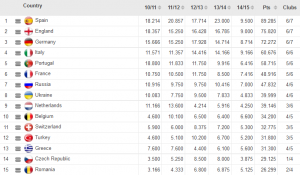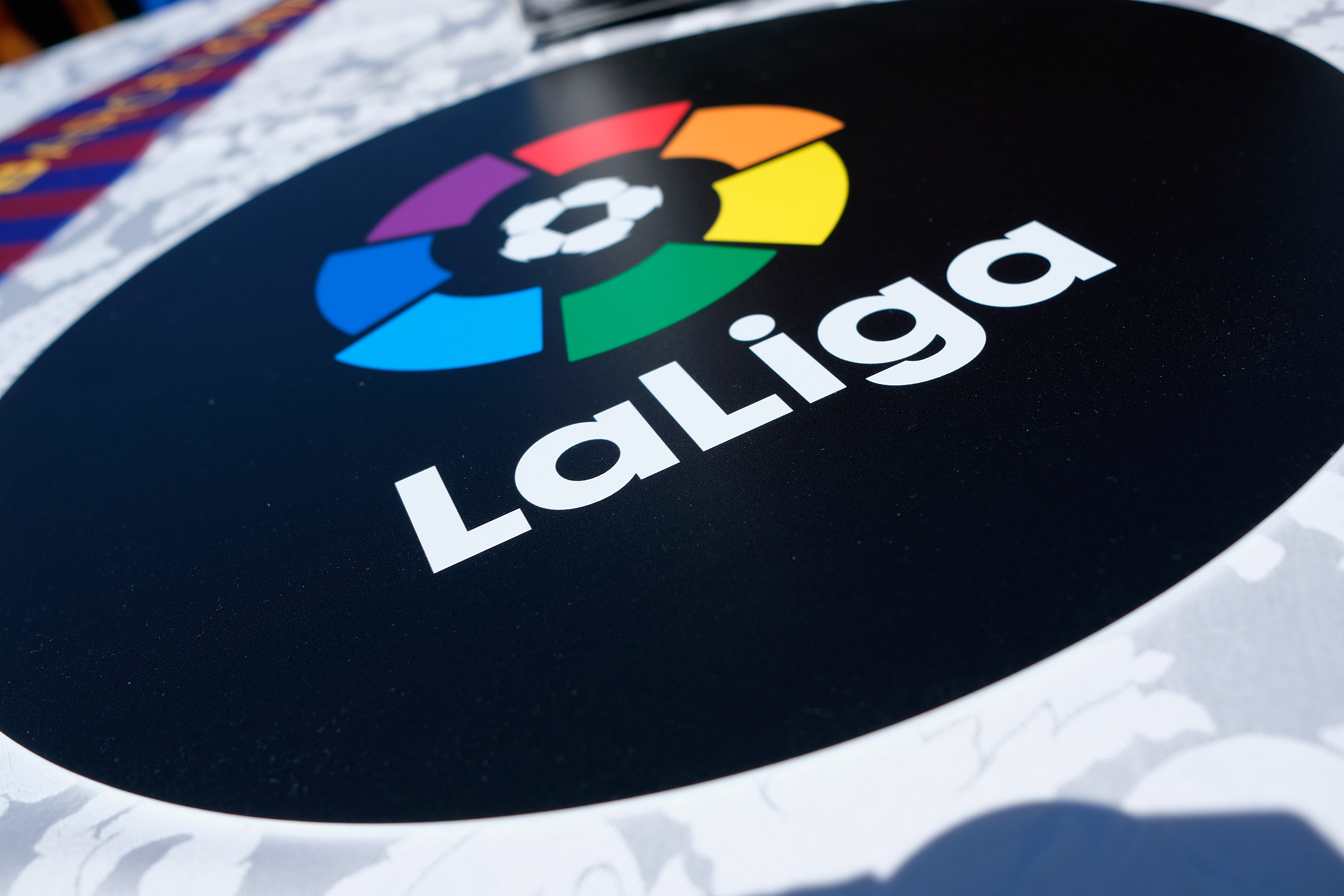The group stage of the Champions League and Europa League concluded with all the six Serie A teams advancing to the knockout stages. AS Roma finished third in their group and as a result were a relegateda to Europea s second tier competition, the Europa League. While the exit was definitely a disappointment, for the sake of Italya s coefficient it could be a blessing. A move down to the Europa League will not yield the same financial package or prestige rewards but it presents an opportunity to improve their club ranking which might allow them to move from Pot 4 to 3 or maybe even 2. The other benefit if they go deep into the competition is that it will yield more co-efficient points. Portugal surpassed Italy briefly for one year which in turn gave them better seeding for the draws this term, however the way the ranking system works, Italy will return to number four at the end of this year regardless of the results. As much as people talk about the doom and gloom of Calcio, this year there is a genuine chance to improve the co-efficient points. Roma may have missed out on five bonus points for Italy but their presence in the Europa League gives some hope of improving the countrya s coefficient.
For the past few seasons, Italian clubs have neglected this tournament. But with their Uefa coefficient slipping, the FIGC would be well advised to consider prompting Serie A clubs to take the Europa League seriously. Lazio were the first Italian team to reach the quarter finals of the Europa League in 2013 only to be eliminated by Fenerbahce. Before that Udinese were in the quarter finals in 2009 when the competition was still called Uefa Cup. There has been no logical explanation as to why the Italians snub this competition. Parma were the last Italian team to win this competition back in 1999 when they crushed Marseille 3-0 in the final game, thanks to goals from Hernan Crespo and Enrico Chiesa. Between 1990 to 1999, Italian clubs won 7 Uefa Cups, 3 Champions League and 3 Cup Winnersa Cup. In those golden years one could easily confuse the Uefa Cup final with a Coppa Italia final as the final match was generally an all Italian affair: Juventus-Fiorentina in 1989-90; Inter-Roma in 1990-91; Juventus-Parma in 1994-95 and Inter-Lazio in 1997-98. In the 1989-90 season, Italian clubs won the three main European trophies: Milan were the winners of Uefa Champions League, Juventus won the Uefa Cup and Sampdoria lifted the Cup Winnersa Cup.
But after 1999 the downfall started and not a single Italian club has won this trophy since then. The economic difficulties have been well documented but in the last ten years, clubs like Sporting Braga, Fulham and Alaves have reached the final. These clubs dona t even come close to the revenues that Milan, Juventus or Roma generate. It is a known fact that the revenues offered for a club participating in the Europa League is much less compared to the Champions League but the effects of under-performing have come back to hit the Italian clubs hard. Clubs started to focus on the league only and concentrated on securing the Champions League spots while fielding fringe players in the Europa League. A perfect example was Walter Mazzarria s decision to rest key performers like Marek Hamsik and Gokhan Inler on the bench against Czech side Viktoria Plzen in 2013 which ultimately led to their elimination. In 2010-11 Juventus, Palermo and Sampdoria were eliminated in the group stage. These disappointments culminated in Italy collapsing to the fourth place with Germany taking over. Italy now have only three clubs in the Champions League while England, Spain and Germany have four each.
To make things a bit more clear let us look at how points are awarded to clubs competing in Europe.
-
Each team gets two points for a win and one point for a draw (points are halved for matches in the qualifying and play-off rounds)
-
Clubs that reach the round of 16, quarter-finals, semi-finals or final of the UEFA Champions League, or the quarter-finals, semi-finals or final of the UEFA Europa League, are awarded an extra point for each round.
-
In addition, four points are awarded for participation in the group stage of the UEFA Champions League and four points for qualifying for the round of 16
“The coefficient is calculated by working out an average score: dividing the number of points obtained, by the total number of clubs representing an association in that seasona s two club competitions. The resulting figure is then tallied with the results of the previous four seasons to calculate the coefficient. Where two associations have the same coefficient, the association with the higher coefficient in the most recent season is placed first,” via UEFAa s official website.
So this clearly suggests winning the Europa League will virtually yield the exact same amount of co-efficient benefit as winning in the Champions League will offer inspite of the large monetary value difference between the two. Keeping this in mind Europa League was used as a building block by the Germans to take Italya s third place in the ranking. Falling out of the top 6 seems unlikely for the next 5 years atleast but Italian clubs can no doubt bring home the points by focusing on this competition.

Looking at the stats it can be seen that Italy had the better of the Portuguese clubs in most of the years. By the end of this season the gap between Italy and 5th place should widen. As for getting back the third place it seems much more work is required as Germany will have a big season this year with the co-efficients as six of their clubs have qualified for the knockout stages. Meanwhile, Ligue 1 clubs have simply not done enough to give a scare to the top 5. As the table suggests, France have not accumulated more points than Italy in any of the five seasons.
UEFA Champions League Club Point Calculation:
-
First qualifying round elimination a 0.5 points
-
Second qualifying round elimination a 1 point
-
Group stage participation a 4 points
-
Group stage win a 2 points
-
Group stage draw a 1 point
-
Round of 16 participation a 4 points
Since 2009/10 clubs have been awarded an additional point if they reach the round of 16, quarter-finals, semi-finals or final.(via UEFAa s official website)
UEFA Europa League Club Point Calculation::
-
First qualifying round elimination a 0.25 points
-
Second qualifying round elimination a 0.5 points
-
Third qualifying round elimination a 1 point
-
Play-off elimination a 1.5 points
-
Group stage win a 2 points
-
Group stage draw a 1 point
Since 2009/10, clubs have been guaranteed a minimum of two points if they reach the group stage and are awarded an additional point if they get to the quarter-finals, semi-finals or final.(via UEFAa s official website)
The last few seasons have been disastrous for the Italian clubs but they have a major chance to rebuild the co-efficients this year. The club and country co-efficients are identical once the group stages are reached meaning Italya s Inter, Roma, Torino, Fiorentina and Napoli all can make a significant impact this year if they can advance beyond the Round of 16 stage. Rafa Benitez is a big fan of this competition and will no doubt look to win this tournament. Fiorentina have been the most impressive Italian club this year in Europa but they face a tough test against Tottenham. Roma definitely possess the quality to win this tournament and will no doubt look to make amends for their disappointing group stage exit from the Champions League. Roberto Mancinia s Inter Milan should also back themselves to do well while Torino, inspite of their shaky domestic form, have shown their worth in Europe and could be a surprise package. According to the figures, Italy have registered an average of 9.166 points this season, just behind leaders Spain on 9.500. Italian clubs must continue this good start and succeed on the pitch in the following rounds.




